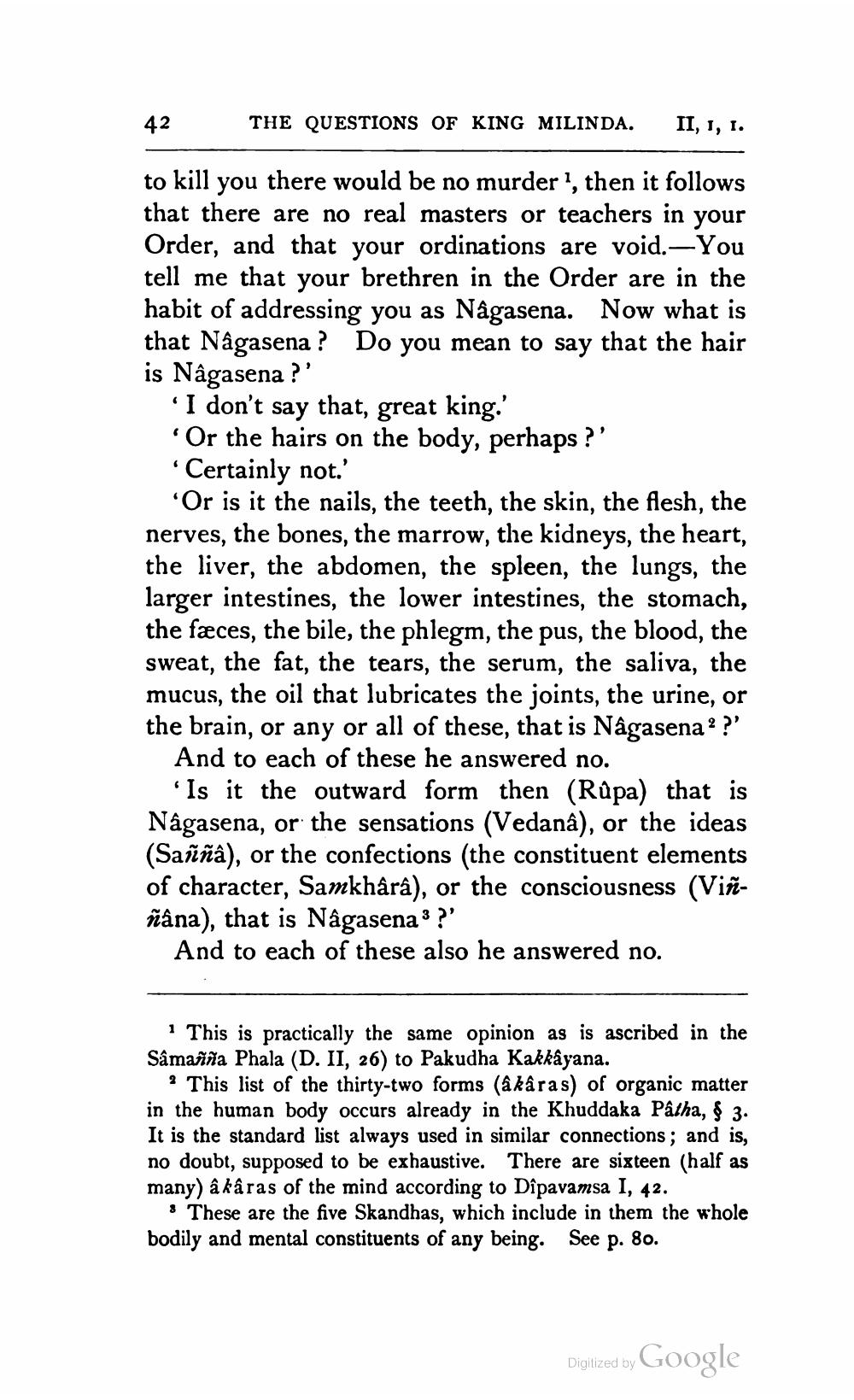________________
42
THE QUESTIONS OF KING MILINDA.
II, 1, 1.
to kill you there would be no murder ?, then it follows that there are no real masters or teachers in your Order, and that your ordinations are void. — You tell me that your brethren in the Order are in the habit of addressing you as Nagasena. Now what is that Nagasena? Do you mean to say that the hair is Nâgasena?''
I don't say that, great king.' Or the hairs on the body, perhaps ?' Certainly not.' 'Or is it the nails, the teeth, the skin, the flesh, the nerves, the bones, the marrow, the kidneys, the heart, the liver, the abdomen, the spleen, the lungs, the larger intestines, the lower intestines, the stomach, the fæces, the bile, the phlegm, the pus, the blood, the sweat, the fat, the tears, the serum, the saliva, the mucus, the oil that lubricates the joints, the urine, or the brain, or any or all of these, that is Nagasena? ?'
And to each of these he answered no.
'Is it the outward form then (Rupa) that is Nagasena, or the sensations (Vedana), or the ideas (Saíña), or the confections (the constituent elements of character, Samkhârâ), or the consciousness (Viññâna), that is Nâgasena? ?'
And to each of these also he answered no.
1 This is practically the same opinion as is ascribed in the Sâmañña Phala (D. II, 26) to Pakudha Kakkâyana.
This list of the thirty-two forms (âkâras) of organic matter in the human body occurs already in the Khuddaka Patha, $ 3. It is the standard list always used in similar connections; and is, no doubt, supposed to be exhaustive. There are sixteen (half as many) â kâras of the mind according to Dîpavamsa I, 42.
$ These are the five Skandhas, which include in them the whole bodily and mental constituents of any being. See p. 80.
Diglized by Google




